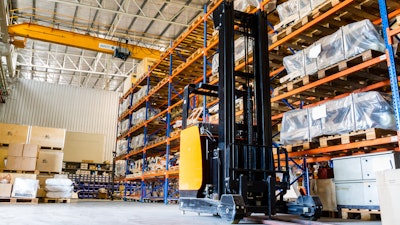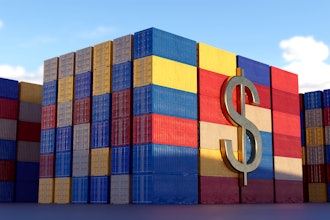
Geopolitical uncertainties, natural disasters and global pandemics have magnified the vulnerabilities within supply chains, posing a significant risk to high-volume businesses. A disruption at any point in the supply chain can lead to delays, increased costs, or even a complete halt in operations.
The increasingly volatile global business landscape has turned supplier diversification into a vital resilience strategy.
The solution to this increasing risk lies in the diversification of suppliers. Not putting all your eggs in one basket provides a robust safety net for your business, reducing the impact of potential disruptions. This practice involves expanding your supplier base to ensure that a problem with one supplier won't lead to a major disruption in your business.
Essentially, supplier diversification provides businesses a cushion against unpredictable events. For heavy-shipping companies, a diversified supplier base ensures a steady supply of products even in the face of major disruptions. Having a variety of suppliers dispersed globally minimizes risk and enhances the resilience of your supply chain.
Identify Potential New Suppliers
The first step toward supplier diversification is identifying potential new partners. This requires a comprehensive approach that involves conducting detailed market research, attending relevant trade shows, and maximizing your industry networks. These strategies can open up new avenues for supplier partnerships and provide a broader base to select from.
After identifying potential new suppliers, you must conduct a careful assessment. This involves examining their financial stability, product quality, and delivery reliability. It's not enough to find a supplier that can offer the products you need; they must also be capable of delivering them efficiently and reliably.
Additionally, evaluating the quality of goods a supplier provides is crucial. Subpar quality can impact your products negatively and hurt your brand's reputation. Therefore, ensure that any new suppliers you're considering align with your quality expectations and standards.
Evaluate and Select Suppliers
Once you've identified potential new suppliers, the next step involves a thorough evaluation and selection process. This is where you'll need to ensure that potential suppliers align with your company's values, standards, and business needs. For instance, if your company is committed to sustainability, your suppliers should demonstrate the same commitment.
Selection involves more than just comparing prices. It also entails weighing factors like quality, delivery speed, and sustainability. It might be tempting to go for the supplier with the lowest prices, but remember — the cost should never compromise the quality of goods or delay delivery times.
Additionally, consider how well potential suppliers can meet your volume needs. If you’re shipping e.g. over 500 products a month, you need suppliers who can consistently meet these demands. Evaluating a supplier's capacity to handle your volume needs is a vital part of the selection process.
Here's a handy roadmap to guide you through the evaluation and selection process:
- Value alignment: Ensure your potential suppliers share your company values.
- Quality assessment: Evaluate the quality of the goods provided by the potential supplier.
- Price comparison: Cost is a significant factor — make sure you get the best value for money, but never compromise the quality.
- Delivery speed: Assess their ability to meet your delivery schedule.
- Volume capacity: Evaluate a supplier's capacity to handle your volume needs.
Following this roadmap equips your business to forge partnerships that stand the test of time and market uncertainties — solid supplier relationships are the backbone of a resilient supply chain.
With these selected partners in place, the subsequent integration process becomes a strategic endeavor, seamlessly leading us into integrating these newly identified suppliers into your existing supply chain.
Integrate New Suppliers into the Existing Supply Chain
Having identified and selected new suppliers, it's now time to integrate them into your existing supply chain. This process requires careful planning and coordination. Begin by negotiating terms with your new suppliers. Make sure to detail the responsibilities of each party clearly and establish communication channels for any inquiries or issues.
The next step involves setting up legal contracts. These contracts should outline the agreed terms and conditions, protecting both parties' interests. They should also contain clauses detailing how to resolve disputes, should they arise — which will ensure a smoother relationship with your new suppliers.
Finally, coordinating logistics is key to integrating new suppliers. You'll need to align delivery schedules, discuss packaging and shipping standards, and address any potential issues with your warehousing services providers, or other logistical challenges. Remember, a well-coordinated integration process reduces potential disruptions and helps maintain the stability of your supply chain.
Monitor Performance and Manage Suppliers
Successful supplier diversification doesn't end with integration. Instead, it requires ongoing performance monitoring and management. Start by setting key performance indicators (KPIs) for your suppliers. These should reflect your business's expectations and standards, providing a measurable way to assess supplier performance.
Regular performance reviews are also essential. These reviews allow you to spot any issues early on, allowing for timely resolution. They also offer an opportunity to provide feedback to suppliers, fostering continuous improvement.
Finally, the importance of open and frequent communication cannot be understated. Regular engagement helps build stronger relationships with your suppliers, encourages transparency, and facilitates quicker problem-solving. Remember, managing suppliers is an ongoing task, crucial for maintaining a robust, diversified supply chain.
Here are the most crucial areas to monitor regularly:
- Delivery performance: Are suppliers meeting delivery schedules? Are there delays and/or disruptions?
- Quality of goods: Keep a close eye on the quality of goods received, and close lookout for any drop in quality!
- Pricing changes: Monitor any changes — unexpected price increases can impact your budget and overall costs.
- Communication efficiency: Gauge how effectively the supplier communicates; focus on avoiding misunderstandings and resolving issues faster.
- Order accuracy: Mistakes in orders usually lead to delays and increased costs.
- Sustainability practices: If sustainability is a crucial part of your business, monitor whether your suppliers continue to uphold sustainable practices.
After consistently monitoring these key areas, you'll not only ensure the smooth operation of your supply chain but also solidify a collaborative and transparent relationship with your suppliers. Such proactive management is the foundation of a resilient supply chain, positioning your business for sustained success in an unpredictable market.
Embracing Supplier Diversification for a Resilient Future
We’ve learned that supplier diversification is more than just a protective measure against supply chain disruptions — it's an active strategy that builds resilience and equips businesses to adapt in a fast-changing global scenario. For businesses in the manufacturing and B2B distribution sector, diversification is no longer an option but a necessity.
However, diversification should not be a one-time task. It requires continuous improvement, adaptation, and management. As the business climate evolves, so should your strategies. Keeping a flexible, open approach to supplier relationships will allow you to adjust as necessary and maintain a strong, reliable supply chain.
Finally, the benefits of supplier diversification extend beyond risk mitigation: diversification opens up new opportunities, fosters innovation, and provides a competitive edge. Embracing supplier diversification is not crucial just to weather current disruptions, but to strengthen your position for future growth and success.
Alex Selwitz is the director of SEO for Red Stag Fulfillment.






















